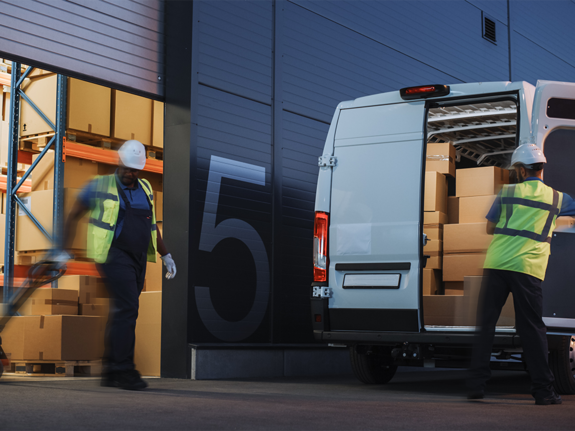Working with your suppliers: Can you make your supply chain more sustainable?

Having an environmentally sustainable supply chain is an ambitious goal that involves some challenges and can require several steps to achieve. It’s also a constantly changing environment that needs to be regularly assessed.
Claudia Rebolledo, a professor in the Department of Logistics and Operations Management at HEC Montréal, offers up these essentials that companies will need to keep in mind if they’re looking to achieve a more sustainable supply chain.
What is a sustainable supply chain?
“It’s a supply chain that integrates environmental criteria into the entire purchasing process. Those criteria will vary from company to company.”
There are various environmentally important actions your company can take:
1. Take into account the product’s life cycle
“You have to think about what happens once the product has reached the end of its practical use,” says Rebolledo, adding that key questions need to be asked. “What can a consumer now do with it? Can it be returned? Is it easily recyclable?”
2. Buy the most environmentally friendly materials possible
Rebolledo offers the example of the desire for a company to have products that are still durable, but made from non-toxic materials and verifiable certified sustainable sources. The goal is to optimize energy and resources to their utmost potential without compromising on quality.
3. Reduce product-related greenhouse gas emissions
“You have to evaluate the amount of greenhouse gases emitted not only in manufacturing the product, but also in transporting it.”
4. Reduce purchases by reusing and recycling
“The most environmentally friendly purchase is the one you don’t make,” says Rebolledo. “This means thinking about circular economy or, in other words,
making a different kind of choice before you purchase, such as sharing, leasing (renting), reusing, repairing, refurbishing or recycling.
Set your priorities for a sustainable supply chain
To determine the right environmental criteria for your purchases, you’ll need to decide on those that are most important to you.
You might have to decide what’s a priority since it’s likely that you won’t be able to address them all. In ESG (Environmental, Social and Governance) terms, you need to determine what’s “material”—a term that describes what affects the finances of your business. What’s material will determine your absolute priorities.
Some criteria may be very important, while others may simply be things you’d like to do but are not essential. “Meeting certain criteria comes with a price tag, so companies need to decide how far they’re willing to go to achieve them.”
In Rebolledo’s view, a company can’t claim to be environmentally sensitive while only choosing suppliers that offer the lowest price. They need to look at a supplier holistically and consider not just their price but the supplier’s values and commitment to sustainability.
“Don’t worry: greener companies will not always charge higher fees,” she adds. “Sometimes companies can take a different approach and work more efficiently and then save money elsewhere to offset some of their more expensive sustainable choices.”
Some strategies, such as reducing purchases by way of reusing and recycling materials, can even offer considerable savings.
How do you find sustainable suppliers?
Once you have determined your environmental priorities, make them a part of your purchasing department’s supplier selection process.
“The company’s choices must be consistent with the criteria they’ve defined,” says Rebolledo.
That said, getting there isn’t always easy. “We can look for environmental certifications in certain areas of activity and for suppliers with those certifications,” she suggests. “However, it’s a very complex world to navigate, and finding a certification doesn’t mean you’ll find the perfect company. But it does show that the supplier is serious and that they’re working to meet certain conditions.”
How much research is needed to find out if a supplier is environmentally friendly?
While it’s important to trust your suppliers, Rebolledo does warn businesses to be cautious. She says companies should do some prior research on their suppliers. “Don’t just believe what they say, especially if it’s your first time dealing with them.”
If you can’t find suppliers with the standards you’re looking for, you may want to help them improve their environmental performance.
Claudia Rebolledo
Professor, Department of Logistics and Operations Management, HEC Montréal
Making regular visits to suppliers can be difficult, especially if they’re located abroad. But companies need to do their due diligence.
“Companies often don’t deal directly with suppliers, but with distributors. While this complicates things, executives still need to do their homework. They need to ask questions about the procurement and production systems, not just for direct suppliers, but also for second- and third-tier suppliers.”
Working with your suppliers
No company is perfect, but improvements are always possible, which is the direction you want to take with your suppliers.
“If you can’t find suppliers with the standards you’re looking for, you can always help them improve their environmental performance,” explains Rebolledo, offering examples such as developing indicators and training staff.
It’s often important decision-makers and large companies that engage in such initiatives because they have more resources. “That said, there’s nothing stopping SME managers from talking to their suppliers to look for solutions together and find ways to improve.”
Lastly, don’t be afraid to ask for help, says Rebolledo. “Making your supply chain sustainable is a complex process that includes many technical aspects, such as materials, life-cycle analysis, technologies and certifications. You need to reach out for expertise that will help you see things clearly. Fortunately, there are experts and various entrepreneurial networks and industry groups where you can discuss all these things.”
Next steps
Want to learn more? Request an appointment with our experts to discuss your supply chain optimization opportunities.